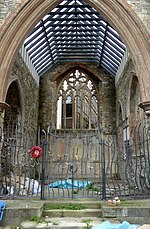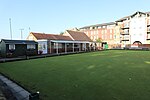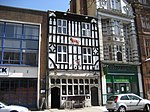Bargate (ward)
Wards of Southampton
Bargate is an electoral ward in Southampton, England. It covers Southampton City Centre, and stretches as far as Ocean Village and St Mary's to the east, and West Quay and The Polygon to the west. Bargate Ward had 18,762 residents in the 2011 Census, which had risen to an estimated 20,926 in mid 2015.The ward takes its name from the Bargate, the northern gate of the old City Walls which still stands today, and is bounded by (clockwise from West) Freemantle Ward, Bevois Ward, Peartree Ward and Woolston Ward.
Excerpt from the Wikipedia article Bargate (ward) (License: CC BY-SA 3.0, Authors).Bargate (ward)
King Street, Southampton St Mary's
Geographical coordinates (GPS) Address Nearby Places Show on map
Geographical coordinates (GPS)
| Latitude | Longitude |
|---|---|
| N 50.9 ° | E -1.4 ° |
Address
Eldon House
King Street 1-7
SO14 3DF Southampton, St Mary's
England, United Kingdom
Open on Google Maps









